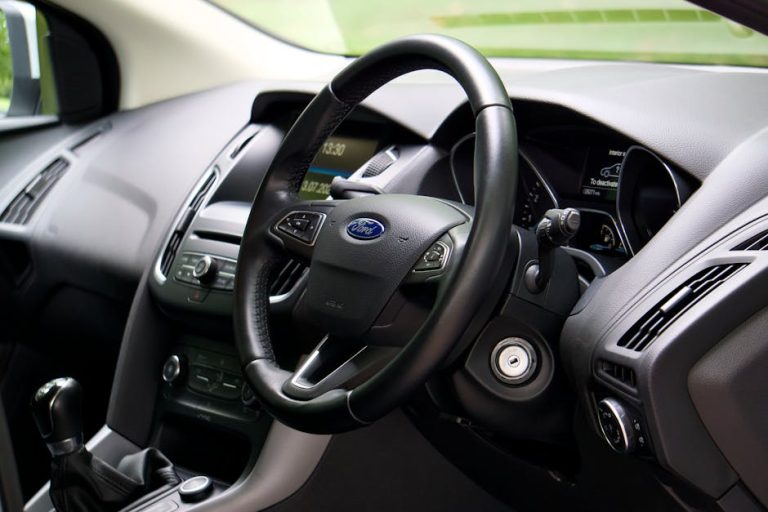In the rapidly evolving digital landscape of 2025, where content creation and consumption reach unprecedented levels, the demand for high-fidelity audio continues to surge. While streaming services offer convenience, many professionals and audiophiles still prioritize uncompressed sound for its clarity and richness. This growing need often leads to a crucial question: how does one responsibly and effectively acquire “wav from youtube” for various applications? This comprehensive guide delves into the nuances of extracting high-quality audio from YouTube videos, exploring the technical considerations, legal implications, and best practices that define the current era.
The Resurgence of WAV: Why Lossless Audio Matters in 2025
The pursuit of superior audio quality has never been more prominent than in 2025, driven by advancements in audio equipment and a more discerning listener base. Unlike lossy formats such as MP3 or AAC, which discard data to reduce file size, WAV files retain every bit of the original audio information. This preservation ensures a faithful reproduction of sound, making WAV the format of choice for critical listening and professional applications.
For audio engineers, music producers, and sound designers, working with uncompressed audio is fundamental to achieving pristine results. When building intricate soundscapes or mastering a track, the subtle details and dynamic range preserved in WAV files are indispensable. Consequently, understanding how to responsibly obtain “wav from youtube” has become an increasingly vital skill for a wide array of digital creators.
Navigating the Legal and Ethical Landscape of Audio Extraction
Before attempting to extract any audio, it is paramount to understand the legal and ethical boundaries surrounding content from YouTube. All content uploaded to YouTube is subject to copyright law, meaning the creator typically holds exclusive rights to their work. Unauthorized reproduction or distribution of copyrighted material can lead to severe legal consequences, including fines and lawsuits.
The concept of “fair use” provides limited exceptions, allowing for the use of copyrighted material for purposes such as criticism, commentary, news reporting, teaching, scholarship, or research. However, applying fair use is complex and depends on factors like the purpose and character of the use, the nature of the copyrighted work, the amount used, and the effect of the use upon the potential market. Always ensure you have the necessary permissions or fall squarely within fair use guidelines before converting “wav from youtube” content for anything beyond personal, non-commercial archival.
Methods for Acquiring WAV from YouTube Content in 2025
As technology progresses, so do the methods available for audio extraction, each with its own set of advantages and limitations. While convenience often draws users to online converters, professional quality and ethical considerations point towards more robust solutions. Understanding these options is key to responsibly obtaining “wav from youtube” with optimal results.
Online Converters: Convenience vs. Compromise
Many online tools claim to convert YouTube videos to WAV files with ease. These platforms typically require pasting a video URL and then provide a download link. While seemingly convenient, they often come with significant drawbacks, including lower audio quality due to re-compression, intrusive advertisements, and potential security risks from malicious scripts or bundled software.
Furthermore, relying on these services can lead to inconsistent results, as their underlying conversion algorithms and server capacities vary widely. For any serious application demanding high fidelity, online converters are generally not recommended. Always prioritize caution and verify the legitimacy of any service if you choose this route, recognizing the inherent limitations in quality.
Dedicated Software and Digital Audio Workstations (DAWs)
For those prioritizing audio fidelity and control, dedicated software solutions and Digital Audio Workstations (DAWs) offer a superior approach to extracting “wav from youtube.” These tools allow for direct audio capture from your computer’s sound card or through virtual audio cables, ensuring that the sound is recorded as it plays, often bypassing the quality degradation of online converters. Programs like Audacity (free and open-source), Adobe Audition, or Reaper provide robust recording capabilities. They enable users to capture system audio, monitor levels, and save the output directly as a WAV file, often with adjustable bit depth and sample rate settings.
Beyond simple recording, DAWs offer extensive post-processing capabilities, allowing for noise reduction, equalization, and normalization to further refine the extracted audio. For those seeking expert guidance on integrating such tools, especially across different operating systems, resources like androidiosexperts offer valuable insights into optimizing tech solutions for diverse needs. Advanced users might also consider using screen recording software with high-quality audio capture options, coupled with virtual audio routing software, to achieve precise control over the audio stream before converting “wav from youtube” to its final format.
Browser Extensions: A Mixed Bag
Some browser extensions purport to facilitate direct audio downloads from YouTube. While they offer a quick solution, their reliability, security, and impact on audio quality can be inconsistent. Many of these extensions operate on a fluctuating legal status and may collect user data or introduce security vulnerabilities. It is crucial to thoroughly vet any extension before installation, checking reviews and permissions.
Often, these extensions merely act as intermediaries to online converters, providing little in the way of true lossless extraction. For professional or sensitive work, relying on dedicated software provides a far more secure and quality-controlled environment. Always exercise extreme caution when considering browser-based solutions for extracting “wav from youtube.”
Optimizing Audio Quality: Best Practices for “wav from youtube”
Obtaining a high-quality WAV file from YouTube content requires more than just the right tool; it demands attention to the source material and proper configuration. The fundamental principle is that the output WAV can only ever be as good as the source audio on YouTube itself. YouTube re-encodes all uploaded videos, often optimizing for streaming efficiency, which can introduce some level of compression even if the original upload was lossless.
When capturing “wav from youtube,” always ensure you are streaming the video at its highest available quality setting (e.g., 1080p or 4K, which usually corresponds to better audio bitrates). For the recording itself, aim for a bit depth of at least 16-bit and a sample rate of 44.1 kHz or 48 kHz, standard settings for CD quality and video production respectively. Recording at higher bit depths (e.g., 24-bit) provides more headroom for post-processing without introducing digital noise, a critical consideration for professional audio work. For more details on digital audio standards, you can refer to authoritative resources like this guide on audio formats and quality from The Verge. Minimize background processes and system sounds during recording to prevent unwanted noise interference, ensuring a clean capture of “wav from youtube.”
Real-World Applications and Case Studies
The ability to acquire “wav from youtube” opens up a myriad of practical applications across various industries and personal projects. Understanding these use cases can highlight the versatility and importance of lossless audio extraction. However, remember to always adhere to copyright laws and ethical guidelines in every scenario.
- Music Production and Sampling: Producers often extract short soundbites, unique vocal phrases, or instrument samples from YouTube for creative remixing or integration into original compositions. The high fidelity of WAV files ensures these samples retain their original character without introducing artifacts. This practice allows for creative experimentation while still requiring proper licensing if the derived work is commercial.
- Podcasting and Content Creation: Podcasters frequently need specific sound effects, ambient background noises, or short musical stings for their episodes. By extracting “wav from youtube,” they can incorporate high-quality audio elements that elevate their production value. It is crucial, however, to verify that any music or sound effects used are royalty-free or properly licensed to avoid copyright infringement.
- Academic Research and Archiving: Scholars and researchers may extract segments of lectures, historical speeches, or unique interviews available on YouTube for analytical purposes or long-term preservation. The lossless nature of WAV ensures that these valuable audio records are preserved with maximum fidelity for future study. For detailed information on fair use in academic contexts, consult resources such as the U.S. Copyright Office’s information on fair use.
- Sound Design and Video Editing: Video editors and sound designers often require specific audio textures, foley sounds, or dialogue snippets to enhance their visual projects. Converting “wav from youtube” content allows them to incorporate these elements seamlessly into their timelines without compromising overall audio quality, providing a rich sonic experience for the audience.
Future Trends in Audio Extraction and AI
Looking ahead to 2025 and beyond, the landscape of audio extraction from online platforms is poised for significant transformation. Artificial intelligence (AI) and machine learning are rapidly advancing, offering new possibilities for enhancing audio quality and capabilities. AI-powered tools are emerging that can perform advanced source separation, allowing users to isolate vocals from instrumental tracks or extract specific instruments from a mixed recording with unprecedented accuracy. This could revolutionize how creators interact with and repurpose content, making the acquisition of specific “wav from youtube” elements even more precise.
Furthermore, AI models might soon offer intelligent upscaling of audio, potentially restoring some lost detail from compressed YouTube streams, although truly lossless recovery remains a technical challenge. As platforms like YouTube continue to evolve, we may also see more official, albeit perhaps licensed, pathways for content creators to access high-quality audio assets directly. The interplay of stricter copyright enforcement and sophisticated AI tools will undoubtedly shape the future of obtaining “wav from youtube” for professional and creative endeavors.
Conclusion
In 2025, the demand for high-quality audio remains steadfast, making the process of responsibly obtaining “wav from youtube” a valuable skill. Whether for professional music production, engaging podcasting, or academic research, the benefits of lossless audio are undeniable. While technological advancements offer increasingly sophisticated methods for extraction, ethical considerations and strict adherence to copyright law are paramount.
By prioritizing dedicated software, understanding audio fundamentals, and always respecting intellectual property rights, users can harness the vast resources of YouTube while maintaining the highest standards of quality and legality. The future promises even more advanced tools, but the core principles of quality, ethics, and legal compliance will continue to guide the responsible acquisition of “wav from youtube” for all users.
Frequently Asked Questions (FAQs)
-
Is it legal to convert “wav from youtube” for personal use?
Generally, converting YouTube videos for strictly personal, non-commercial use, such as offline viewing or listening, is often considered permissible under fair use in some jurisdictions, though YouTube’s terms of service prohibit unauthorized downloading. However, using copyrighted material for public performance, distribution, or commercial purposes without permission is illegal and violates copyright law.
-
What is the best way to get the highest quality “wav from youtube”?
The best way to obtain high-quality “wav from youtube” is by using dedicated audio recording software or a Digital Audio Workstation (DAW) to capture the audio stream directly from your system’s sound output. Ensure you play the YouTube video at its highest available quality setting and record at a high bit depth (e.g., 24-bit) and sample rate (e.g., 48 kHz).
-
Are all “wav from youtube” conversions truly lossless?
No, not necessarily. While the output file format is WAV (lossless), the quality is ultimately limited by the original audio stream provided by YouTube, which is often compressed. Converting from an already compressed source will not magically create a truly lossless file; it merely places the existing quality into a lossless container. The goal is to capture the highest possible fidelity available from the YouTube stream.
-
Can I use “wav from youtube” in my commercial projects?
Using “wav from youtube” in commercial projects, such as music releases, paid podcasts, or commercial videos, is highly risky and often illegal without express permission or licensing from the copyright holder. Always assume YouTube content is copyrighted and seek proper licenses if you intend to use it commercially to avoid legal issues.
-
What are the risks of using online “wav from youtube” converters?
Risks of using online “wav from youtube” converters include poor audio quality due to aggressive re-compression, potential malware or viruses from deceptive ads, security vulnerabilities that could compromise your device, and often, a violation of YouTube’s terms of service. It is generally advisable to use reputable software solutions for better control and security.













